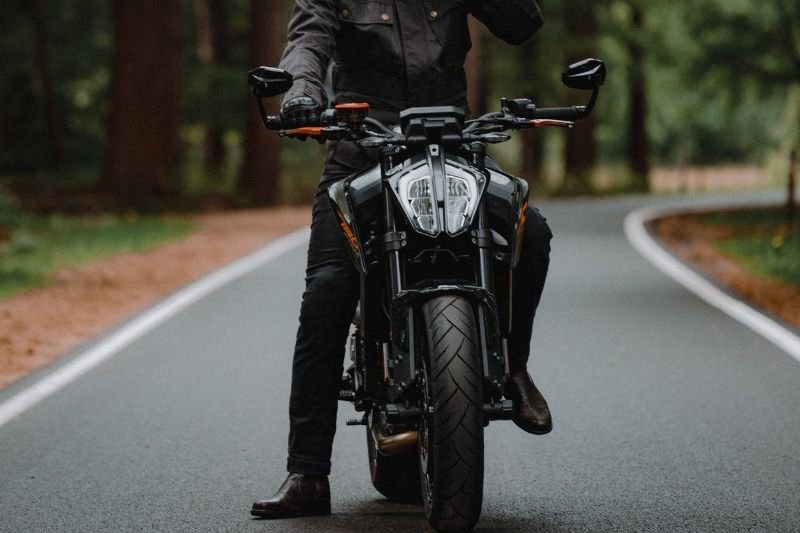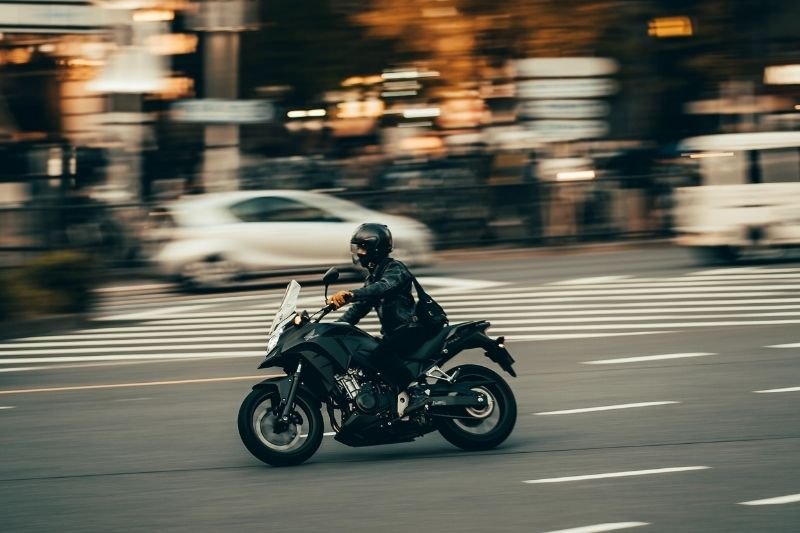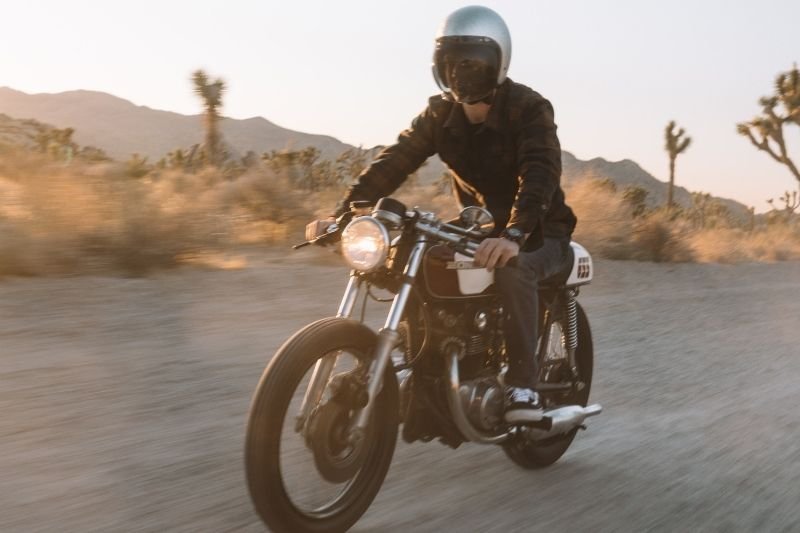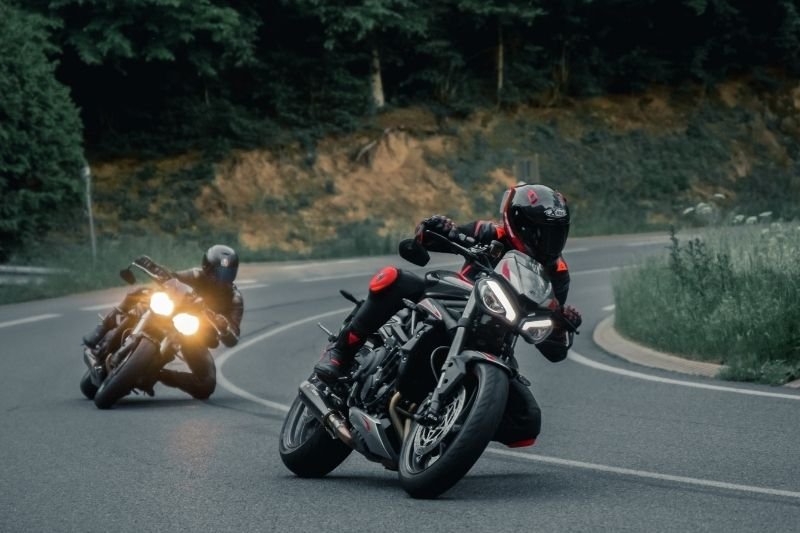Discover Fodsports Brand Month July and August mark a special occasion for motorcycle enthusiasts and tech lovers alike. Welcome to Fodsports Brand Month! This event is dedicated to celebrating everything that makes Fodsports a leading name in the motorcycle communication industry. Get ready for a fantastic promotions, exceptional service from Fodsports. Let's insights into Fodsports' […]
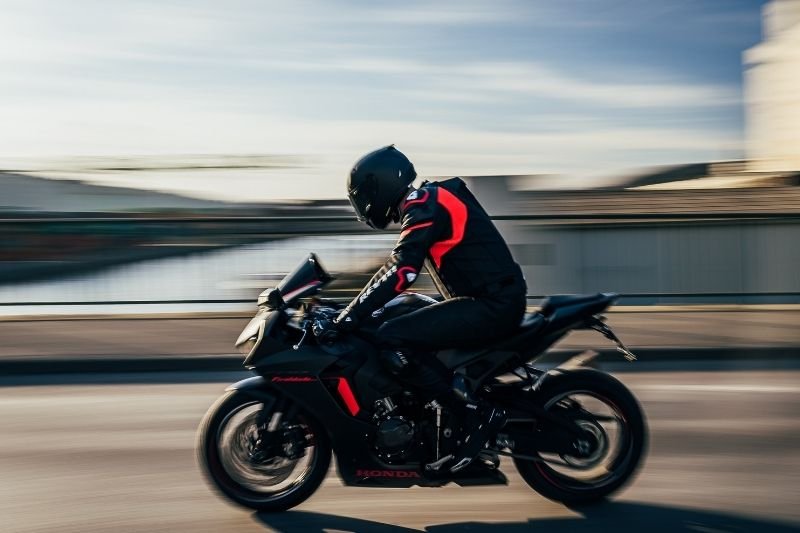
When To Shift Gears On A Motorcycle At What Rpm? 6 Gears You Must Know, The Ultimate Shift Guide
Shifting a motorcycle is one of the challenges a motorcyclist obtains when learning to ride a motorcycle.
I managed to pick up a stack of suggestions on RPM, redlining and everything there is around it. Today, I'm gonna share all of when to shift gears on a motorcycle at what rpm with you, so stay and also proceed reading out to discover.
Many times, the motorcycle riders do not transform the gear of their motorcycles according to the speed they are running in. Some also alter gears only after the engine starts roaring and some also stall the motorcycle.
Don't be afraid, you can master the movement of the motorcycle through practice, and it's really simpler than it sounds.
Revolutions per min or RPM of the engine is a signal' in easy language to inform you to shift gears.
This is not a set rule that the gear shift needs to remain in the required RPM. There are numerous aspects.
- Such as gas effectiveness or economic driving- Shift gears at reduced RPM state 2000-3000 or 2-3.
- Or for performance and also to drive with complete advantage- shift gears at higher RPM state 4000 and above.
So, when to shift gears on a motorcycle at what rpm?
While the rider must shift the gears a lot more in reaction and the ideal speed differs relying on the scenario,
Determining when to shift will depend on the motorcycle, road conditions, and take a trip rate. While most motorcycles are good shifting at 5,000 to 7,000 RPMs, it is best to judge by the sound and also feel of the engine. As you relocate quicker, its pitch will certainly boost. When the pitch is high, it is time to shift.
The Approximate Speed Resembles This,
- 0 to 15 km/h for first gears
- 15 to 30 km/h for second gears
- 30 to 40 km/h for three gears
- 40 to 55 km/h for four gears
- 55 km/h and higher for five and also sixth gears
Once more, to restate, the rate is even more of a guideline as opposed to the rule.
The motorcyclist ought to always listen to the motorcycle and shift the gears appropriately rather than adhering to regulation-based gear shifting.
With time, the motorcyclist will certainly get utilized to the motorcycle requirements as well as will certainly shift the gears according to their suitable rate simply on the reactions.
So, there is no demand to stress in case you are a newbie and also are fretting about the speed at which to shift the gear.
Table of Contents
6 Gears You Must Know
1st Gear
Allow us initially talk about the first gear. The excellent rate array for the initial gear is 0 km/h to 15 km/h.
The primary feature of the first gear is not for driving, however to shift the motorcycle from rest to start.
Unless you are embedded on a steep uphill, you barely utilize the initial gear to drive along.
Driving in initial gear is scratchy at best. The smooth operation of the motorcycle begins just from the second gear.
The initial gear is distinguished from the various other gears by positioning the initial gear down on the motorcycle et cetera gears are all up with the neutral gear between the first and also the 2nd.
The neutral gear positioned in between signals the cyclist to make use of the first gear only for beginners.
For driving objectives, begin with the 2nd The gear.
2nd Gear
The second gear is where the motorcycle driving begins.
The suitable rate range for the second gear is between 15 km/h to 30 km/h.
The second gear is the most utilized gear if you are traveling on inactive and also crowded roads.
The heavy traffic makes it impossible for the motorcyclist to accelerate the motorcycle to high rpm.
In addition, the second gear does not have the disturbance that you really feel while riding in the first gear and also is comfortable to ride on also when you are in a traffic jam.
3rd Gear
For the third gear, the suitable speed variety is between 30 km/h to 40 km/h.
From here on, the speed array is actually more of an approximate overview as opposed to something that needs to be complied with purely.
Additionally, the rpm and also rate of the gear, especially greater gears differ a little for different motorcycle make and also models.
4th Gear
The best rate array for the fourth gear is between 40 km/h to 55 km/h.
Once again, the speed range is actually even more of an approximate guide rather than something that requires to be followed strictly.
You can also transform to 5th gear at 50 km/h. And it would not be an issue whatsoever.
In the fourth gear, the power created according to the gear proportion will be suitable in the rate range of 40 km/h to 55 km/h.
Fourth gear is when you begin truly quickening your motorcycle.
You will certainly start riding at high speed from here. Although 40 km/h might not look high, it is still considered a significant rate and any accidents involved at this speed can wound the motorcyclist.
5th And 6th Gears
For 5th as well as sixth gears, the best speed is anything over 55 km/h.
You can even move to the 5th gear at a 50 km/h rate itself.
Generally, you would certainly move up to the fifth gear only when the roadway is smooth, there is minimal traffic or you are driving on a freeway.
As well as riding on fifth or 6th gear carries more threat of injury for the motorcyclist in case of any accidents or crashes.
So, you need to be cautious and ought to be prepared to move down the gear whenever you are riding your motorcycle on 5th or 6th gear.
Since the speed for these higher gears is anything over 55 km/h, the motorcycle cyclist needs to be cautious and also should prepare to move down the gears or apply the brakes promptly.
If you consciously alter the gear according to their best speed variety, the main benefit will certainly be the far better upkeep of the motorcycle parts.
- The clutch plates will certainly be in a healthy and balanced condition. The clutch plate will not obtain burned quickly and also won't be damaged.
- The gear will not obtain stuck and also the transmission will work efficiently over a long period of time.
- The engine elements will certainly be able to work smoothly without an unpredictable lot coming from the gear and transmission.
- When you shift and move the gear according to the rate array, the mileage of your motorcycle will certainly be high. The gas economic situation or the mileage will drastically boost.
Beginner Shift Skills
- Disengage the clutch
- Select the suitable gear
- A little rev of the engine
- Progressively release the clutch
- Feather the throttle while releasing the clutch
- Rev the engine for velocity up until another shift is needed
The auto mechanics to move a motorcycle are as easy as these 6 actions, nonetheless to do it smoothly calls for a lot of technique.
Know your motorcycle's Internal and external devices to have a concept of exactly how they function.
Technique riding in an open location without transportation. For example, a car park. As well as, most notably, be secure as well as mindful throughout the learning procedure.
You will most likely find that riding a motorcycle is less complicated than it seems. When you obtain the clutch feel, gear matching, and just how much throttle is required to have smooth velocity, the process will certainly be a lot easier and also it will certainly require much less emphasis.
After a lot of practice and riding you'll feel that gear changing will certainly start to be an automatic reaction.
Although this activity is fairly simple as well as repeated in riding, it prevails to see a motorcyclist "scraping gear".
Tips for Quickly Shifting Gears of Motorcycles
- Always attempt to downshift one piece of gear each time.
- Listen to the noise engine as you shift the gear. If you feel the motorcycle torque is weak, it is needed to reduce and also consequently obtain power, and also the other way around.
- When changing from the initial to neutral, be sure to launch the clutch slowly to make certain it is neutral. Performing a quick clutch launch with a gear engaged might trigger the engine to sink or create bumps.
- The engine may break if there's no shifting after the redline.
Superb Shift Technology
It's simple to tell the experience level of a motorcyclist just by seeing how he shifts. That's since shifting is called for so frequently in riding.
Shifting efficiently is essential due to the fact that while between shifts, the cyclist is specifically at risk.
Racers, particularly drag racers, have turned to shift into an art form.
What you require to want is that the shift needs to be done at the point where it will certainly get in the following gear at an rpm equal to the engine's torque top.
The below techniques are not advised for beginners and must be experimented with care.
Upshifting
Quick, reliable upshifts are quite simple to master when you take the time to practice the method.
Your key goal is to minimize the quantity of time that you are not speeding up. This can be made with a clutchless upshifting.
To do that, race motorcycles make use of quick-shifters to shift gears without needing to close the throttle. Nowadays some stock road motorcycles currently come with a quick-shifter.
Quick-shifters work by having a sensor identify motion in the shift linkage from the cyclist's foot and afterward reduced the ignition for around 40 milliseconds. This dumps the transmission and permits it to quickly shift right into the next higher gear.
The good news is that you can include a quick-shifter for your motorcycle. Nevertheless, it's kind of costly.
What if I inform you can achieve almost the exact same result by resembling the "cutting-power" with the throttle?
The initial step in clutchless upshifting is making sure the engine is under full load. This implies full throttle as well as super-high rpm.
The second is preloading the shift lever by drawing your foot up with simply slightly much less pressure than that required to engage the next gear.
Next, promptly roll off the throttle about 10-20 percent of its twisting variety and get back to full throttle. The wrist motion here needs to be as little and also as rapid as feasible, not unlike blinking an eye.
Lastly, when this takes place, the torque force on the transmission will briefly unload, and also the preloaded shift lever will now snick into the following gear.
To finish up, for full-throttle "rate changing" no clutch is required.
Most riders are impressed the very first time they discover that they don't require to use the clutch in high-performance moving.
Bear in mind, that this assumes a complete engine load. With a little throttle opening, there is no need for rapid upshifts so you need to shift as regular (with the clutch).
Downshifting
High-performance downshifting is significantly more difficult than upshifting and also requires much more method time to obtain the feel for it.
To briefly clarify, one of the most essential facets of downshifting is to match the engine rate with the wheel rate.
If the engine rate is as well low, the back wheel will start jumping as it has a hard time gaining back traction, which can result in a bad collision.
This is the very first trouble beginner motorcyclists will face when they begin to go fast.
Downshifting by just pulling in the clutch, downshifting the transmission, and also letting out the clutch triggers the engine to need to catch up with the rate of the rear wheel.
This resistance creates the tire to break the grip, puts excessive wear on the clutch, and also makes the motorcycle jerk as the clutch is let out.
This usually happens when you go too high speed as well as downshift greater than 1 piece of gear really fast.
If you are not planning to do a motorcycle slide, attempt to prevent this circumstance.
Some modern-day sporting activity motorcycles have what's called a "slipper clutch".
A slipper clutch is designed to have the clutch plates freewheel up until the engine speed catches up with the wheel rate.
The right strategy for downshifting includes transforming, or blipping, the throttle regarding 30 percent of its turning travel at the split second the clutch is disengaged by pulling in on the bar.
As soon as the clutch is disengaged, the spot will promptly raise the engine rpm-- most called "rev match".
At this moment you should promptly involve the reduced gear.
When the clutch is re-engaged by allowing the bar back out, the brand-new reduced gear proportion will certainly require the higher rpm to efficiently mix engine speed to the new rear-wheel speed.
Although you may over-press the accelerator in this situation, it is unlikely to happen and is not good for motorcycles.
More recent motorcycles are coming with a called "slipper clutch".
It does the exact same work as a quick-shifter yet rather than being clutch-less on upshifting, it gets on downshifting.
When beginning to learn this strategy, you're much better at erring on the side of too much rpm than not enough.
Do not stress if it appears overwhelming. Just take plenty of time to practice this statically before trying it at the rate.
How Do You Know You Have Shifted Gears By Mistake
In most cases, you'll obtain a big shock and listen to silly audio of steel clashing and also grinding.
It's quite awkward generally as you might find that you're additionally over-revving your motorcycle as well. That's if you have not shifted the gear in time.
On the contrary, end, if you shift the gear too early, then you'll experience an absence of power and it'll take forever to rise to a suitable rate.
The jerking movement begins which creates the motorcycle to eventually stop.
Inequality if the motorcycle goes to high speed.
An abrupt release of the clutch can raise the front wheel off the ground causing a wheelie.
A sudden shift in the weight of the vehicle.
Common Problem
1. Do You Require To Use a Clutch To Shift Gears Every Single Time?
Yes, a clutch is needed to transform the gear whenever on a motorcycle.
The clutch is a very integral part of a motorcycle here below is created why it is important.
The clutch is a mechanical component on your left handlebar responsible for the transfer of the engine's power to the transmission system (transmission that provides torque and rate) to the motorcycle.
Clutch is made use of frequently for altering the gear and quitting the motorcycle without switching OFF' the engine.
Clutch, likewise aids to prevent stalling the motorcycle without giving jerks.
For maneuver, squeeze the clutch supply some gas through the throttle after that rapidly launch the clutch for an effective wheelie.
Remember to maintain the clutch in good condition lots of vehicle drivers generate the concern of sliding, binding, going across the shaft, sticking, and other typical clutch issues.
A clutch in an inadequate problem can create a series of concerns, so it is the responsibility of the driver to take action, asap.
2. Can You Skip Gears On a Gear Shift?
Skipping the gear is funny, yet there are a few benefits and drawbacks to this!
For one, the ride is great to feel, specifically as a beginner motorcyclist, for him \ her every gear engagement is meaningful, it implies you take pleasure in as well as love the click audio of the gear and also every little finger and also leg motion involved in changing the gear.
Yet that does not last forever, as you'll quickly pertain to an understanding that the fun disappears (quick). And your basically developing some bad habits that will certainly require washing out later as well.
I have actually become aware of people skipping throughout from 1st to 3rd gears and so forth, however it doesn't do any type of excellent as you'll be moving along like a snail by leaping the gin this way.
Not just that yet you're always triggering a whole lot even more anxiety on the transmission and gear which will certainly lead to a costly journey to the workshop.
The point is that you can avoid the gear, but issues might happen.
For example, If the downshift of gears is also infrequent state from fifth gear to second gear, this can seriously create a problem with the engine, along with endangering the chauffeur's safety.
3. When To Shift Gears On A Motorcycle At What Rpm?
RPM is accountable to measure the rate of the engine rotating.
A high RPM indicates that the engine is spinning faster as well as producing more torque rate, and a reduced RPM indicates the rate of engine rotating is slower therefore it is producing less torque as well as rate.
Also note, that when the RPM is high the consumption of fuel is additionally higher for a noticeable reason (to create even more power).
So to experience rate and also conserve fuel shift up at 2000 RPM.
Maintain the RPM limitation in check, the RPM limitation is a red location, in the tachometer screen or simply known as the redline'.
The engine can be damaged if the red line is crossed. So to maintain the performance of the motorcycle shift at reduced RPM.
There's no real answer for the best shift point. Revving high is not needed for many road riding conditions.
4. Is It Feasible To Shift From 5th To 1st Gear?
You can switch however it will be way too much risk due to the fact that there will be a sudden shift in the speed.
In fifth gear the motorcycle will be clearly in way too much speed as well as, as quickly as you shift it to 1st and even second, the rate will certainly vary to a high level, making the motorcycle tough to control.
5. How to Locate Neutral?
Finding neutral can be challenging for new motorcyclists.
But a bit of persistence and a mild touch makes the task less complicated.
If you're not drawing the clutch completely, it might be harder to get into neutral.
6. How To Slow Down To A Stop?
You always need to shift gears when you need to slow down.
Doing so will not just allow making use of the engine braking to help in reducing the rate, it will allow you to have even more torque and also accelerate once again if the stop is not necessary.
7. Will A Motorcycle Beginning In 1st Gear?
Motorcycles can be begun in 1st gear quickly by pulling in the clutch. For greater gears, the motorcycle will certainly start, however dies down when you release the clutch to move on. In case the clutch switch is not working, Motorcycles will not start in any type of gear.
8. Does Stall Damage Your Motorcycle?
Stalling will not create any damage to your motorcycle. However, if there are too many Stallings of delay, there can be an influence on the peripherals like a chain, and also sprockets, damage in the shutoffs or your motorcycle gear can obtain stuck.
9. Can I Park my Motorcycle on Neutral?
It is possible to leave it parked on flat ground, yet if you're parking at a likely inclined area, leave it in 1st gear to keep it from rolling off its side stand.
10. Can I Install A Quick-Shifter?
Absolutely, quick-shifters aren't for tiny motorcycles though. Watch out for a quick-shifter that matches your motorcycle model as well as get it installed by a mechanic.
Things To Remember While Shifting Gears
Motorcycle gear does not shift smoothly is among the usual troubles associated with motorcycle gears.
The major reasons for gear shifting concerns include problems in the clutch wire, engine oil, chain and also gears, and the gear shift bar itself. If your gear is not shifting either up or down, then there is trouble in either of these 3 things.
Oil/lubrication-oil degree is low or you have actually made use of low-quality Oil.
Transmission Gear-took transmission, foreign object embedded the gear set up.
Chain-loosened up the chain, worn-out chain gears.
Additionally, if you do not transform the gear according to their rate ranges, the gear could get stuck or there might be way too much stalling of the motorcycle.
Final Words
If you have a motorcycle make sure you recognize it's operating well or at least know those details.
This way, you can conserve the engine's life and also gas and also, obtain the fundamental information regarding shifting the gear efficiently and also promptly.
You can learn more about motorcycles here, here are the Top 11 Tips For Riding Safely In Heavy Traffic.
And you can read the 13 Pros and Cons of a Motorcycle Exhaust Wrap (And The Most Complete Operation Guide).

Rodney L is a technical writer and product consultant with over a decade of experience in the motor industry. Rodney is a fan of performance machines that run fast and loud and an expert in all things custom. His numerous articles and write-ups are available at our knowledge base. Whether it’s something wrong with your motorcycle or you are building a custom bike, you can trust Rodney’s experience.
Introduction to motorcycle dealers in California California has diverse landscapes and endless stretches of scenic highways. For many motorcycle riders and travelers, it is a paradise. When you are preparing to buy a motorcycle for your next trip in California, you may need to choose a motorcycle dealer to cooperate with. This is crucial for […]
Mesh motorcycle intercom technology is a game-changer in the ever-evolving realm of motorcycle communication. It is a cutting-edge solution that promises to enhance group riding experiences like never before. And, it is poised to redefine the way riders connect and collaborate on the open road. In this article, we will introduce Fodsports FX10C, a top […]
Introduction About Helmet Bluetooth Intercom Kit As an avid motorcyclist, the ability to stay connected while on the road is a game-changer. If you're exploring scenic routes with your riding buddies or embarking on a solo adventure, the intercom helmet kit is needed. A reliable helmet bluetooth intercom kit can enhance your experience by enabling […]
Helmet to helmet communication systems have revolutionized the way we interact while riding. And it fosters a heightened sense of connection and safety. In this comprehensive guide, we'll explore the realm of the best Fodsports helmet to helmet intercom devices. If you are an avid solo rider reveling in the freedom of the open road, […]
Bluetooth earpiece for motorcycle helmets have appeared in the world. They have revolutionized the way riders navigate, communicate, and enjoy their favorite music. It changes the way that riders staying connected and entertained with partners on the road. In this comprehensive guide, we'll explore the best motorbike helmet earpiece from Fodsports. Embracing the Freedom of […]

